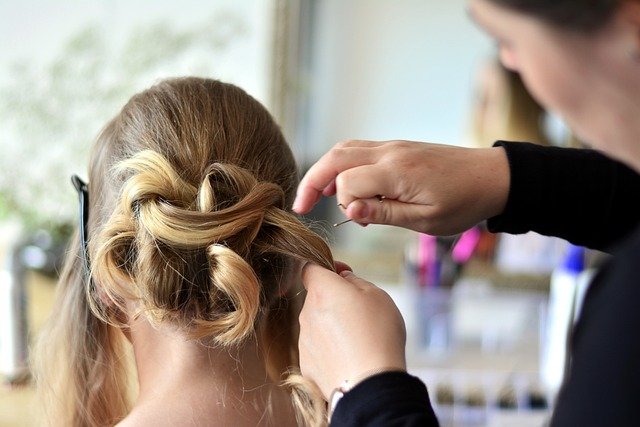Color Correction Basics: Identifying Common Issues and Solutions
Color correction restores an intended hair shade by addressing uneven dyeing, unwanted tones, or damage from previous treatments. This article outlines common issues, practical solutions, and what to consider before attempting corrections in a salon or at home.

Color correction can feel technical, but understanding the core problems makes solutions clearer and safer. This article explains typical issues—such as uneven shade, brassiness, stubborn roots, and rapid fading—and how factors like porosity, previous dyeing, and ingredients influence outcomes. Read on for practical steps, whether you’re researching salon services or careful DIY adjustments.
How does porosity affect shade and dyeing?
Hair porosity determines how well the cuticle accepts and retains color. Low-porosity hair resists moisture and may repel dye, producing inconsistent tinting, while high-porosity hair absorbs color quickly but struggles to hold pigments, leading to uneven results or faster fading. A strand test can reveal porosity: porous sections often look frizzy or feel rough. Address porosity before major corrections by using conditioning treatments, protein or moisture-balancing products as appropriate, and by choosing formulas designed to match the hair’s absorption profile. That preparation helps the chosen shade deposit more evenly and improves longevity.
What causes uneven roots and how can they be fixed?
Uneven roots occur when new growth reacts differently than previously colored lengths. Factors include natural hair color, porosity differences between root and mid-lengths, and timing of previous dyeing. A common salon approach is root-smudging or a targeted gloss to blend the demarcation. For DIY attempts, apply a root-specific formula and process carefully to avoid overlapping onto previously treated hair, which can overdevelop. When tinting from darker to lighter or vice versa, professional assessment is recommended because overlapping bleach or high-lift dyes can damage hair if not balanced with bond-preserving treatments.
Why does fading happen and how to improve longevity?
Fading is influenced by dye type, shampooing habits, sun exposure, and water quality. Permanent dyes typically penetrate the cortex and last longer, while semi-permanent or glosses sit more on the surface and fade sooner. To improve longevity, minimize frequent washing with hot water, use sulfate-free shampoos, and incorporate color-safe conditioners and gloss treatments. Products with UV filters and antioxidant ingredients can reduce photo-degradation. Regular maintenance glosses or toners refresh shade without full re-dyeing, extending the time between more intensive procedures.
Should you choose a salon or DIY for correction?
Choosing salon services versus DIY depends on the complexity of the correction. Salons offer professional assessment of your hair’s history, porosity, and underlying pigments, plus access to toners, bond-repair treatments, and custom shades. DIY kits can be appropriate for simple root touch-ups or minor shade adjustments, provided you follow patchtest instructions and product guidelines. For multi-step corrections—like removing heavy dye, lifting from dark to light, or fixing severe brassiness—a salon setting reduces risk of uneven tinting or over-processing. Always read ingredient lists to avoid incompatible chemicals when mixing products.
How do toners, gloss, and ingredients influence final results?
Toners and glosses refine unwanted undertones and enhance shine without major lift. Toners neutralize brassiness by depositing subtle counter-colors, while glosses boost shine and temporarily seal the cuticle, improving appearance and smoothing porosity differences. Active ingredients matter: oxidizing agents and ammonia allow permanent changes, while acidic glosses close the cuticle and condition. Bond-repairing ingredients (like certain proteins or reconstructors) help maintain integrity after chemical work. Reading ingredient lists and understanding each product’s role helps set realistic expectations for immediate and near-term results.
Why are patchtests, aftercare, and regular maintenance important?
Patchtests screen for allergic reactions to hair dye ingredients and are a simple but essential safety step before full application. Aftercare prevents premature fading and protects treated hair: use gentle cleansing, avoid excessive heat styling, and apply conditioners and masks formulated for colored hair. Maintenance routines may include periodic toners or gloss treatments at the salon or with salon-grade products at home to refresh shade. Monitoring porosity and adapting treatments—more moisture for high porosity, occasional protein for weakened hair—keeps color even and helps prolong desired shade and shine.
Conclusion
Understanding the mechanics behind discoloration and uneven tinting—porosity, prior treatments, product ingredients, and maintenance habits—makes color correction more predictable. Whether addressing roots, fading, or brassiness, a careful assessment and appropriate combination of toners, glosses, protective treatments, and maintenance will improve outcomes and hair health over time.





